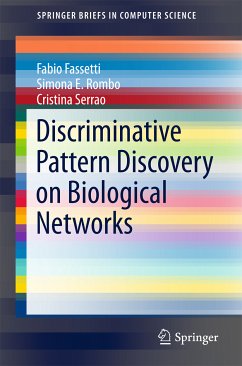The text also covers techniques for discovering exceptional patterns, such as a pattern accounting for local similarities and also collaborative effects involving interactions between multiple actors (for example genes). Among these exceptional patterns, of particular interest are discriminative patterns, namely those which are able to discriminate between two input populations (for example healthy/unhealthy samples).
In addition, the work includes a discussion on the most recent proposal on discovering discriminative patterns, in which there is a labeled network for each sample, resulting in a database of networks representing a sample set. This enables the analyst to achieve a much finer analysis than with traditional techniques, which are only able to consider an aggregated network of each population.
Dieser Download kann aus rechtlichen Gründen nur mit Rechnungsadresse in A, B, BG, CY, CZ, D, DK, EW, E, FIN, F, GR, HR, H, IRL, I, LT, L, LR, M, NL, PL, P, R, S, SLO, SK ausgeliefert werden.









